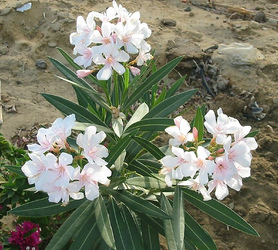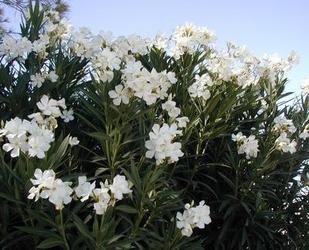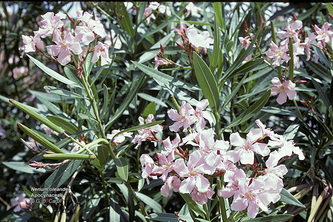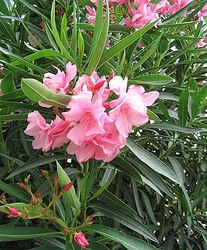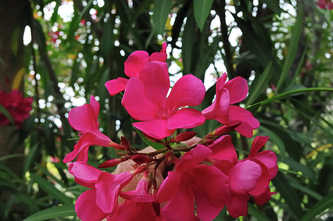Bewildered Greeny
Captivating Oleander
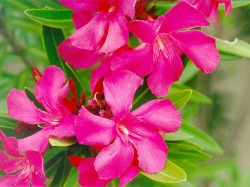
Ever heard of the book and movie "White Oleander? Well it was written around this poisonous plant. Oleander is one of the most poisonous of commonly grown garden plants, and can be very toxic if ingested in sufficient quantity. This being so .. I was incredibly hesitant to bring this plant into my collection let alone into my home and backyard. But I figure that it can be safely kept safely as long as it is well monitored around pets and children. Its not like any adult that knows what it is would purposely eat it. And from what I've read most pets are smart enough not to mess with it. And children especially in our family are well supervised. So yes... there is risk bringing a plant like this into my collection.. but I don't find it a threat because I am aware of its danger.
Plant Care
Culture
Light: Bright sun, some shade is acceptable.
Moisture: Versatile, can survive both dry and wet soils. Fastest growth occurs when provided moisture in times of drought.
Hardiness: USDA Zones 8-10. Easily grown in warm humid climates, like Florida and the Gulf coast, oleander is recommended for USDA Zones 8-10. It will survive some frost and temperatures to 15-20ºF (-9.4 - -6.7ºC) but foliage will be damaged. Some varieties are hardier than others.
Propagation: Semiripe cuttings are best rooted in summer. Also by seed, but selected cultivars may not grow true to form.
Pests: Aphids and scale may be a problem (more likely in humid climates). Also attacked by a caterpillar that will strip a plant in a matter of days.
Light: Bright sun, some shade is acceptable.
Moisture: Versatile, can survive both dry and wet soils. Fastest growth occurs when provided moisture in times of drought.
Hardiness: USDA Zones 8-10. Easily grown in warm humid climates, like Florida and the Gulf coast, oleander is recommended for USDA Zones 8-10. It will survive some frost and temperatures to 15-20ºF (-9.4 - -6.7ºC) but foliage will be damaged. Some varieties are hardier than others.
Propagation: Semiripe cuttings are best rooted in summer. Also by seed, but selected cultivars may not grow true to form.
Pests: Aphids and scale may be a problem (more likely in humid climates). Also attacked by a caterpillar that will strip a plant in a matter of days.
